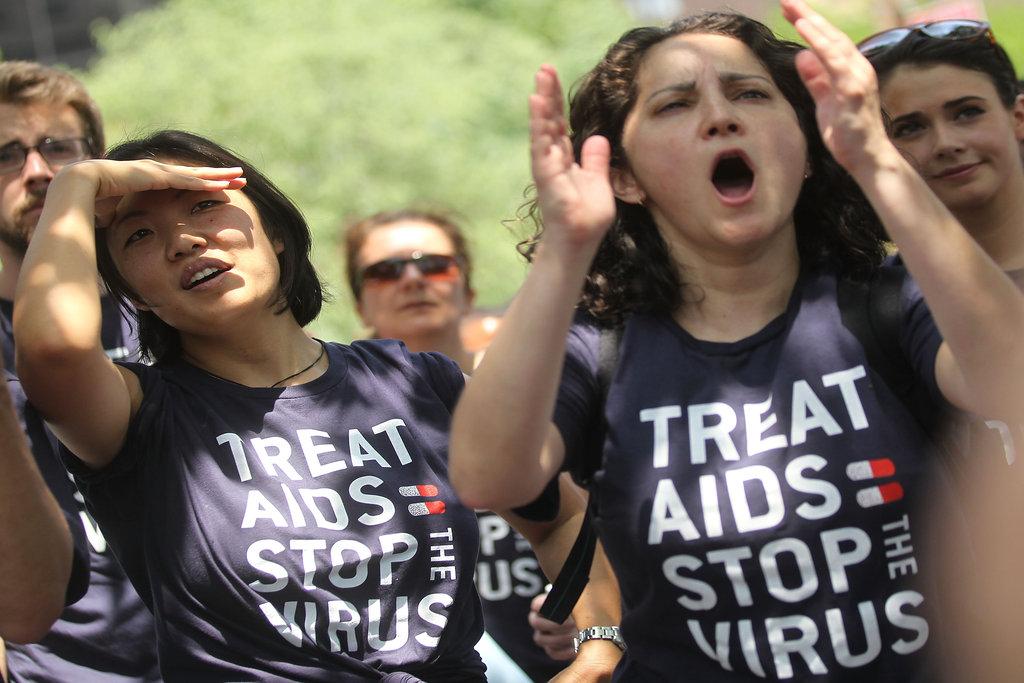Making sure the national HIV/AIDS strategy works
Demonstrators cheer at a rally outside the United Nations’ High Level Meeting on HIV & AIDS at U.N. headquarters June 8, 2011 in New York City. Activists from Doctors Without Borders/Médecins Sans Frontières (MSF) and other organizations rallied to call for full funding for worldwide treatment and prevention of HIV/AIDS.
WASHINGTON, D.C. — When the White House released the National HIV/AIDS Strategy (NHAS) in 2010, it set out to reduce the number of people who become infected with HIV, increase access to care and reduce HIV-related health disparities.
The Office of National AIDS Policy (ONAP) called on the Institute of Medicine (IOM), an independent non-profit, to examine data gaps in monitoring access and quality of HIV care. The IOM was also put to task on how to monitor the effects of the new health reform law, which will cover many HIV patients who were formerly uninsured.
On Thursday, the IOM released their recommendations to the public in a 259-page report.
As reported by Kaiser Health News’ Shefali S. Kulkarni, highlights included:
“barriers to HIV care such as delayed diagnosis, sporadic use of antiretroviral therapy and untreated mental health problems.
‘So now the issue is: There are all these things from the national strategy that we propose to do. How are we going to measure them? In other words, how are we going to know that we got there, and when can we say ‘Mission Accomplished?’’ said Dr. Carlos del Rio, a member of the IOM committee and chair of the Hubert Department of Global Health at Emory University.
… “Basically, at the end of the day, what we are recommending is that existing monitoring systems — for example the CDC’s Medical Monitoring Project and some other projects that exist out there — be strengthened,” Del Rio said.”
In the District of Columbia, program outcome monitoring and quality assurance standards remains a struggle. The D.C. HIV/AIDS, Hepatitis, STD, and TB Administration (HAHSTA) scored a B- in a 2011 report card by DC Appleseed, a local public policy watchdog.
That’s not to say that the District hasn’t made significant strides, considering that for nearly five years — from 2002 to 2007 — there was no reliable HIV/AIDS data to speak of. Since then, the annual report has grown into a complex statistical analysis that breaks down co-morbid diseases, age and risk factors.
Tiffany West, the bureau chief of statistical information at HAHSTA, was brought on in 2006 and is largely responsible for the improvement. She is in charge of reporting testing data, CDC program data and HRSSA data to see how effective programs are working.
“It’s really triangulating the sources of information to say we have a $80 millon budget, we put $40 million dollars on the street, and is it working to improve health outcomes?”
In the Kaiser Health News blog, Dr. Carlos del Rio, a member of the IOM committee and chair of the Hubert Department of Global Health at Emory University, says:
“monitoring HIV care is going to be vital, especially after the implementation of the health reform law. “There’s a lot of concern right now that HIV care, like any other care, is going to be significantly affected by [the health reform law]. So how are we going to know if things got better or worse? And having the right monitoring systems are going to be critical to do that.”
If anything, Washington, D.C. may serve as an indicator for the rest of the nation, where 93 percent of adults and 96 percent of children already have health insurance. It seems some challenges will persist regardless of widespread coverage.
“We need to do a better job of retaining people with in the system,” said West. “Access isn’t a challenge. It’s more about utilization and Americans are horrible health care utilizers [sic].”
The story you just read is accessible and free to all because thousands of listeners and readers contribute to our nonprofit newsroom. We go deep to bring you the human-centered international reporting that you know you can trust. To do this work and to do it well, we rely on the support of our listeners. If you appreciated our coverage this year, if there was a story that made you pause or a song that moved you, would you consider making a gift to sustain our work through 2024 and beyond?
